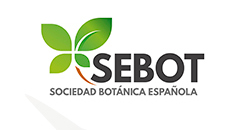Scientific Area
Abstract Detail
Nº613/1767 - The wetland of the “Climate-friendly Parks” - a project in the city of Reggio Emilia (Italy)
Format: ORAL
Authors
Giulia Santunione1, Elisabetta Sgarbi1, Daniela Mordacci2
Affiliations
1 Department of Life Sciences, University of Modena and Reggio Emilia, Via Amendola 2, Reggio Emilia, Italy
2 Municipality of Reggio Emilia, Italy
Abstract
Within the framework of the European project Life CityAdaP3, the municipality of Reggio Emilia, in Italy, is implementing a project known as Climate-friendly Parks. This initiative aims to mitigate the urban heat island effects and enhance the overall environmental quality. Among the foreseen interventions, particularly interest is focused on Marco Biagi Park. This represents a first experimentation of the adaptive park model application. The model is based on the introduction in an urban green area of four main landscape environmental devices, including the micro-forests (as described by Miyawaki method), rural hedges, trees in row and multispecies meadows. Moreover, the project has foreseen the realization of an artificial pond with a lateral runoff, which exploits the possibility of deriving water in the summer from the nearby irrigation channel (managed by the local Consorzio di Bonifica). The landscape environmental devices and the wetland area share common objectives, including the mitigation action on the microclimate, biodiversity conservation, improvement of air quality and the usability for social activities. Particularly attention has been focused on the plant species selection for the wetland, which involves non-rooting and rooting hydrophytes (for example Lemna minor, Callitriche palustris, Mentha aquatica, Nymphaea alba, Nuphar lutea, Nasturtium officinale); proceeding towards the banks we introduced Iris pseudacorus, Lytrum salicaria, Carex sp.pl. and Thypha latifolia. Many common meadow species have been sown to facilitate the colonization of soil near the wetland and some woody trees, Alnus glutinosa and Salix alba, to consolidate the banks. Only native species have been chosen in order to increase plant biodiversity. The realization of this experimental wetland is furthermore aimed to observe how the different species are able to cope with water level fluctuations and in general with the environmental conditions of the site of introduction.




